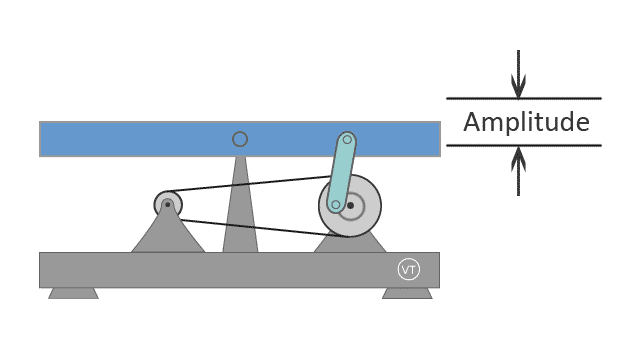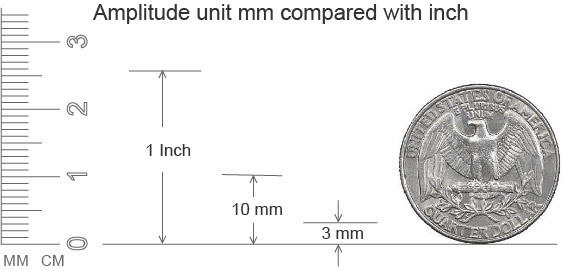Vibration Plate Amplitude — Definition & Influences
Definition of Amplitude
For vibration plates, the vibration amplitude refers to the vertical displacement of the exercise platform from its lowest to highest position. Linear vibration plates and pivotal oscillation plates operate with different movement patterns, resulting in distinct amplitude characteristics.
Different from the Amplitude Defined in Physics
In physics, vibration amplitude is defined as the displacement from the equilibrium (balance) position to the maximum deviation in one direction. However, for vibration plates, amplitude is typically expressed as peak-to-peak amplitude — the total vertical distance between the lowest and highest positions of the platform. This value is twice the physical amplitude defined in physics.
It is important to recognize this distinction when calculating the vibration G-force.
Amplitude of Linear Vibration Plate
The slow motion animation below shows the vibration amplitude of a linear vibration plate.

Amplitude of Linear Vibration Plate
Linear vibration plates are usually designed with amplitude range between 1mm and 3mm.
The amplitude of a linear vibration plate is not constant due to its spring structure; it varies with the user's body weight and the vibration frequency.
Linear vibration plate VT007 and VT009 have two amplitude settings.
Amplitude of Pivotal Oscillation Plate
The slow motion animation below shows the vibration amplitude of a pivotal oscillation plate.

Amplitude of Pivotal Oscillation Plate
Pivotal Oscillation plates are usually designed with amplitude range between 8mm and 12mm.
The amplitude of a pivotal vibration plate remains constant regardless of vibration frequency or user body weight, due to its rigid lever structure. However, users can adjust the effective amplitude they experience by changing their foot position. The closer the feet are placed toward the center of the oscillation axis, the smaller the amplitude becomes — reaching zero at the exact center of the platform.

Influence of Vibration Amplitude on Human Body
Vibration amplitude and frequency are the two most critical parameters that define a vibration plate’s performance. Together, they determine the vibration intensity and the amount of energy transmitted to the body.
At a given frequency, a higher amplitude produces a stronger vibration impact and greater mechanical stimulation on the body.
For individuals with limited strength or stability, it is recommended to use a handlebar or handrail when operating a high-amplitude vibration plate to ensure safety.
Pivotal oscillation plates typically operate at higher amplitudes (around 10 mm), while linear vibration plates are generally designed with lower amplitudes (usually below 3 mm), offering more controlled and stable motion.
| Linear Vibration vs Pivotal Oscillation | |
|---|---|
| Linear Vibration Plates | Pivotal Oscillation Plates |
| Amplitude less than 3mm | Amplitude can reach 10mm |
| Less concern on keeping balance | Need to be more careful for keeping balance | A high-frequency, low-amplitude linear vibration plate has minimal impact on the joints but effectively induces rapid, repeated muscle contractions. The user’s muscles remain engaged and tense, rather than swinging freely. | A low-frequency, high-amplitude pivotal oscillation plate shakes the body vigorously but produces fewer muscle contractions. The user’s muscles stay relaxed and tend to swing more visibly. |
3D/4D Vibration Plates and Safety Concerns
3D or 4D vibration plates add side-to-side oscillation to create a more complex two-dimensional motion. Their lateral displacement — or horizontal amplitude — is typically around 10 mm, which greatly increases the risk of imbalance for the user.
Moreover, this lateral motion does not effectively engage muscles. Instead, it places unnatural stress on the knee ligaments, kneecap, and patellofemoral groove, which can lead to joint injury over time.

Seesaw

Lateral

3D
Manufacturers developed 3D and 4D models for marketing appeal.There is no scientific rationale that more complexed movement is more beneficial — the opposite may be ture.